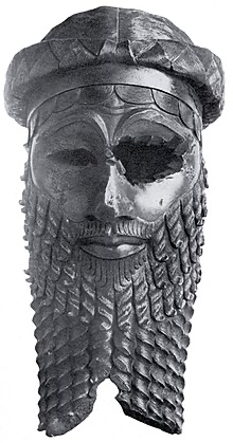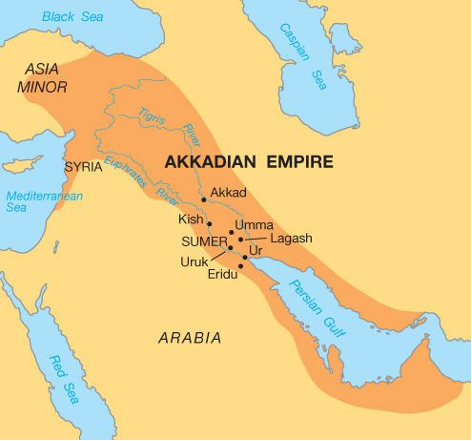Stephanie Guerin-Yodice
Sargon I of Akkad: circa 2334 to 2284 BCE

Since the early conflict between the kings of Umma and Lagash, issues over territorial boundaries and resources continued to monopolize state-building. Territory and resources were both key to the advancement of civilizations in ancient Mesopotamia. Sometime around 2300 BCE, the Sumerian region experienced a usurpation from the north. Sargon, a king from Kish, seized the lower portion of Sumer through a series of wars. He conquered one city-state after another to form a new region called Akkad. Sargon became king of Akkad and systematically brought every city-state within his newly conquered territory under one empire. Sargon realized that implementing bureaucratic systems would be necessary to the survival of his empire. The once independent city-states were now forced to deploy their resources and labor force in the interest of nation-building and the securing the empire. Trade routes were widened and maintained to provide safe passage for traders and travelers. A system of communication with garrison outposts ensured the dissemination of political decrees. Sargon standardized currency throughout the empire by codifying a system of weights and measures. Taxes were collected from every city-state and used to organize a hierarchical bureaucracy. It was under Sargon’s reign that scribes were employed to record his achievements, maintain palace administration records, dispatch government correspondence, oversee the collection and allocation of taxes, and amass a body of literature that reveals the religious and cultural customs of people during the 150 year reign of Sargon and his successors.

The success of Sargon’s state-building can also be attributed to his willingness to embrace technological diffusion. By Sargon’s time, the Stone Age had become the Bronze Age (circa 4000 to 1200 BCE) and smelting techniques had revolutionized military weaponry. Sargon procured key mining locations that fueled his commercial and military expeditions. Through these technological advances, Sargon developed and funded a professional army that was responsible for his military success. Prior to this, men were expected to defend their city-state in times of need but they were not paid. Sargon’s fighting force was made up of infantry who were protected by copper helmets and equipped with a copper-tipped spear. Sargon reorganized their phalanx formations, issued pikes and axes, and armed the front men with shields. He also brought back the bow and arrow, organizing large formations of archers whose barrage of arrows killed men and animals well before the hand-to-hand combat began.

Sargon’s legacy remains clear in the evidence he left. Copious records indicate his talent as a bureaucratic administrator and an economic and military strategist, as well as his vision toward unifying a territory for the benefit of empire-building. After Sargon’s death, a series of rulers continued to reign for approximately 100 years, until a series of conflicts consumed the Akkadian Empire, thrusting the Mesopotamian region into turmoil for centuries. For a short period of time, power was reconcentrated back in the region of Sumer under the Third Dynasty of Ur (2047–1750 BCE), where successful nation-building still relied on the same set of factors: resources, labor force, political structure, and authority. The kings of Ur attempted to consolidate and centralize their authority by building a protective wall around their territory. Still, they were constantly attacked by surrounding tribes, and ultimately the Elamites broke through and sacked the city, ending the era of the Third Dynasty of Ur.

